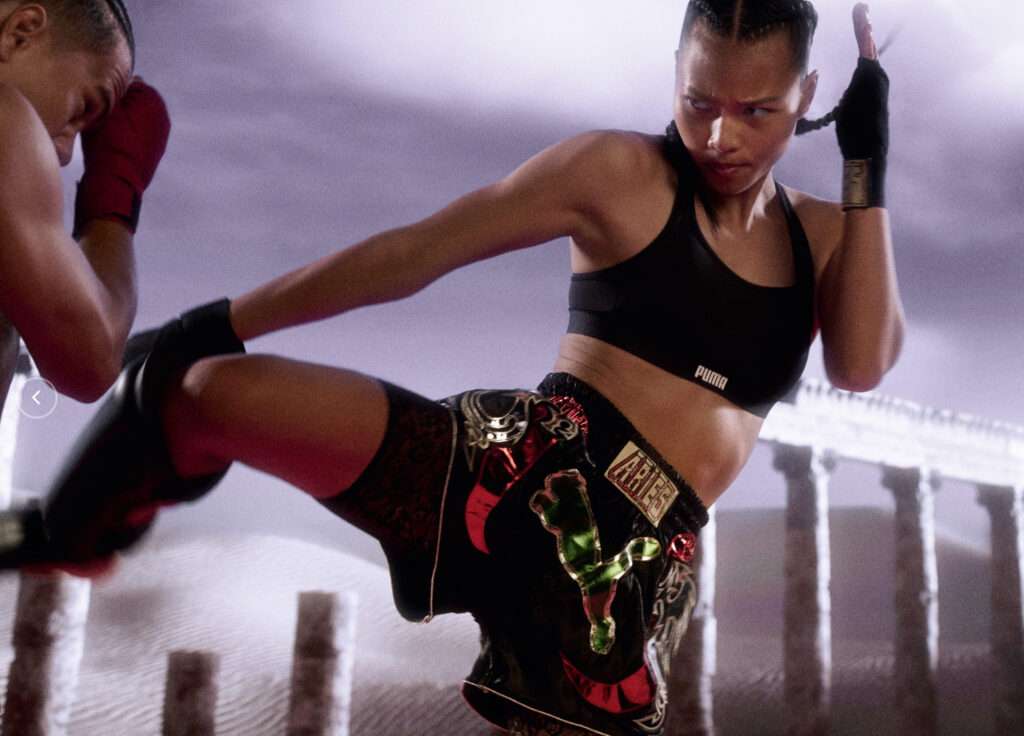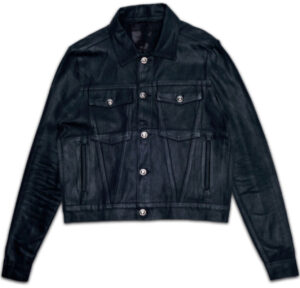


In a cultural landscape where fashion collaborations often slip into formulaic repetition, the second full collection between PUMA and Aries ignites a rare synthesis: athletic energy fused with raw, tribal iconography. This isn’t just about updated sportswear or nostalgic sneaker redesigns—it’s a vision of movement as ritual, of physicality as art. Titled simply Round Two, this latest capsule weaves primal power into contemporary silhouettes, pushing beyond surface aesthetics to explore a deeper philosophy of style rooted in combat, ceremony, and counterculture.
The DNA of the Concept
PUMA, a brand long established at the intersection of performance and design, has increasingly reasserted itself as a progressive partner for subversive creative talent. Aries—helmed by Sofia Prantera—is no stranger to that role. The London-based label built its following through anti-fashion ethos, subcultural sampling, and gender-defiant styling. Together, PUMA and Aries strike a balance between sport and spirit, structure and chaos.
This second collection builds on the momentum of their previous outing, but with greater dimensionality. It’s a capsule that knows what it’s doing: embracing form-fitting silhouettes, functional tailoring, and athletic nostalgia, all punctuated by bold tribal graphics and artisanal flourishes. It doesn’t just update PUMA classics—it reinvents them through a ceremonial lens.
Combat Couture: Where MMA Meets Streetwear
The defining ethos of Round Two is drawn from mixed martial arts (MMA)—a sport where discipline meets primal force. This tension becomes the throughline of the collection, informing everything from garment cuts to graphic language. The Tight Top—a figure-hugging base layer—recalls the compression wear of cage fighters, while the accompanying shirt dress reinterprets the aesthetic for a street-level environment. Both pieces are emblazoned with swirling, neo-tribal graphics that refuse to remain static. These aren’t just prints; they’re marks of symbolic warfare.
Such motifs are not superficial references. Aries has long drawn inspiration from esoteric symbols, post-punk, and underground rave culture—spaces where tribal identity is constructed and expressed through clothing. In this collection, the graphics seem to pulse across the garments, mimicking the energy of a body in motion.
Rebuilding Icons: The New Mostro
At the core of the footwear offering is the resurrection—and transformation—of the PUMA Mostro. Originally launched in 1999, the Mostro was itself an experiment in hybrid design. With a foot-hugging silhouette and signature forefoot strap, it was part training shoe, part lifestyle sneaker, and part futuristic oddity. But in the hands of Aries, the Mostro becomes something altogether different.
Gone is the overt strap system. In its place: a partially concealed lacing mechanism that adds a mystique to the shoe’s identity. The updated upper is rendered in soft, textured leather with precise stitchwork and layered paneling that give it an artisanal edge. It feels closer to a crafted object than a mass-produced sneaker—a rare accomplishment in contemporary sportswear design.
This new Mostro doesn’t just look different; it behaves differently. Its reinterpretation reflects a broader shift in fashion: away from ostentatious branding and toward object-oriented authenticity. It’s a sneaker as amulet. As relic. As tool for movement and mode of expression.
Material Alchemy: Outerwear and Accessories
Elsewhere in the collection, Aries expands on its material vocabulary. The Light Jacket, one of the capsule’s centerpiece garments, exudes restrained drama. A soft gradient fades across its outer shell, whispering visual complexity rather than shouting it. Look closer, and the jacket reveals beaded zipper pulls—details more commonly associated with handcrafted jewelry than performance outerwear. These aren’t gimmicks; they’re storytelling devices. They speak of intention.
This blend of subtlety and ornamentation extends across the accessories—pieces that function less as add-ons and more as extensions of the apparel. Whether it’s the drawcord-adaptable trousers or the modular carry-gear, each element has been considered through the dual lens of function and ritual. Wearability is never sacrificed. But neither is imagination.
The Symbolic Terrain: Tribal Design Reconsidered
One of the most powerful aspects of Round Two is its use of tribal visual language—not as exoticized motif, but as conceptual foundation. In lesser hands, tribal graphics often risk falling into appropriation or pastiche. Here, they function more as visual mantras—reminders of lineage, power, and identity.
Sofia Prantera has long explored such codes, drawing from her deep background in subcultural design. Her previous projects, from Holmes-era Silas to the early underground days of Aries, reflect a fascination with symbol and structure. With PUMA, that language is pushed into a new register. The neo-tribal elements evoke not just the history of body markings and cultural signifiers, but the future of such expressions within sport, gender-fluid fashion, and self-armor.
This makes the collection feel strangely timeless. The pieces could belong to a post-apocalyptic future or a parallel present. Either way, they demand to be worn with intention.
Form, Fit, and Movement
While the capsule excels in concept, it’s grounded in tactile wearability. Form-fitting bodysuits, compression tops, and adjustable track bottoms reflect both a utilitarian understanding of the body and a sensitivity to how garments move in real time. This is not just about fit—it’s about flow.
By blurring the lines between athletic and ceremonial dress, PUMA x Aries invites wearers into a new relationship with their wardrobe. The pieces ask for motion: to be stretched, pulled, zipped, and adjusted. This tactile dialogue between garment and body mirrors the dynamic energy of combat sports—tense, agile, alert.
But it also calls to mind another arena: the dancefloor. There’s something about this collection—especially the vivid prints and cutout constructions—that recalls early rave and free-party aesthetics. The kind of clothing designed not just to be seen, but to participate. To sweat in. To celebrate in.
Commercial Offering, Countercultural Energy
Despite its polish, the PUMA x Aries collaboration still hums with underground energy. That balance—between the refined and the raw—is what elevates it beyond most sportswear capsules. Each piece feels like a conversation between two worlds: the global brand and the niche label, the athlete and the artist.
Even its retail strategy is carefully tuned. Available via Aries’ flagship store in London, on both brand websites, and at tastemaker retailers like END., Slam Jam, and KITH, the collection exists within fashion’s elite pipeline but retains outsider credibility. It’s not streetwear in the trend-chasing sense—it’s streetwear in its original sense: rooted in place, in people, and in practice.
Reclaiming Ritual in Everyday Clothing
What Aries and PUMA have achieved with Round Two is something rare: they’ve managed to infuse ritual into the rhythms of everyday dress. The pieces don’t just mimic sport—they ritualize it. They don’t just borrow from tribal design—they embed its meaning into cuts and silhouettes that feel as if they were made for movement ceremonies, not merely sidewalks.
In this light, the collaboration becomes more than fashion. It becomes a gesture—a way to reclaim adornment as function, ornament as power. It suggests that sport is not just physical exertion, but symbolic expression. That what we wear to train, to compete, to dance, or to fight can be the armor of the self.
The Future of Flow
If the first Aries x PUMA collaboration hinted at possibility, Round Two delivers it. It sets a benchmark for what fashion-sport fusion can become when handled with narrative depth, respect for lineage, and refusal to compromise on creativity.
The result is a capsule that doesn’t pander. It doesn’t dilute. Instead, it amplifies. It reminds us that the future of sportswear lies not in relentless performance metrics, but in the emotional, cultural, and even spiritual dimensions of clothing. It says: sport is ceremony. Design is language. And fashion, at its most inspired, can still be sacred.
No comments yet.








